 |
| Pub lications |
 |
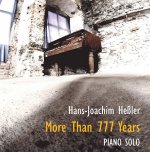 CD "More Than 777 Years" CD "More Than 777 Years"
by Hans-Joachim Hessler
|
 |
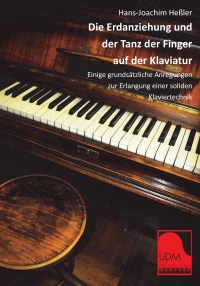 "Die Erdanziehung und der Tanz der Finger auf der Klaviatur" by Hans-Joachim Heßler "Die Erdanziehung und der Tanz der Finger auf der Klaviatur" by Hans-Joachim Heßler
|
 |
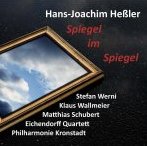 CD "Spiegel im Spiegel" CD "Spiegel im Spiegel"
by Hans-Joachim Hessler
|
 |
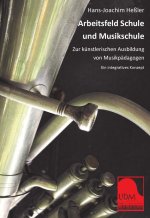 2nd edition of "Arbeitsfeld Schule und Musikschule" 2nd edition of "Arbeitsfeld Schule und Musikschule"
by Hans-Joachim Hessler
|
 |
 The new book about Charles Mingus, one of the most famous jazzmusicians ever to have lived: "Der zornige Baron - Das Prinzip Diskontinuität im Leben und konzeptkompositorischen Schaffen des Charles Mingus jr." The new book about Charles Mingus, one of the most famous jazzmusicians ever to have lived: "Der zornige Baron - Das Prinzip Diskontinuität im Leben und konzeptkompositorischen Schaffen des Charles Mingus jr."
by Hans-Joachim Hessler
|
 |
 Trio Hessler/Werni/Wallmeier Trio Hessler/Werni/Wallmeier
"Der Tanz auf dem Vulkan"
|
 |
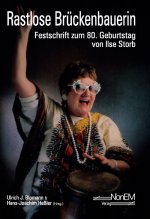 "Rastlose Brueckenbauerin. Festschrift zum 80. Geburtstag von Ilse Storb" "Rastlose Brueckenbauerin. Festschrift zum 80. Geburtstag von Ilse Storb"
Edited by Ulrich J. Blomann and Hans-Joachim Hessler
|
 |
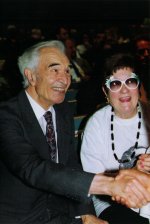 "Swingingly Yours. Ilse Storb. Love and Peace" "Swingingly Yours. Ilse Storb. Love and Peace"
A biography with CD-supplement by Ute Buechter-Roemer
|
 |
| |
| |
| |
|
 |
| United Dictions of Music |
| |
More Than 777 Years (A ramble through the history of music by Hans-Joachim Hessler)
Press responses (selection):
"Hans-Joachim Hessler spark archaic allegros on his set of keys" (WAZ, Newspaper).
"As a result of the Piano-Solo by Hans-Joachim Heßler the audience saw that music can be experienced physical. The piano player was almost merging with his instrument" (Ruhr-Nachrichten, Newspaper).
"Hans-Joachim Hessler captivated the audience by energetic presentation and theatrical dramatic art" (Westfaelisches Volksblatt, Newspaper).
"The extraordinary artist was presenting an exciting evening of music which convinced the audience" (Westfaelischer Anzeiger, Newspaper).
From the content:"What is the particular of the western music in comparison to the music of the East? And what will happen if you would confront these two different styles with the other? The difference between the orient and occident is just a controversial pair and exactly this is Hans-Joachim Hessler showing at his brand new CD «More Than 777 Years». Indeed the title of the CD is the agenda: More Than 777 Years of musical history, from the Middle Ages to the present days, are picked up and mixed to music. Hans-Joachim Hessler is playing a very beautiful sonata from the baroque composer Domenico Scarlatti and homage to the famous Estonian composer Arvo Pärt. In his compositions the era of Ars Nova, Middle Ages and the Marianism in Orthodox churches of eastern Europe are playing a significant role. Hans-Joachim Hessler is having an own interpretation of the Spanish Sarabanda which he is making audio-visual next to the famous Sarabanda from Georg Friedrich Haendel. Besides that you will find three more compositions from the Pianist and Composer Hans-Joachim Hessler. Some of the compositions are in the style of the Renaissance or the piano is played like a percussion instrument as for example in Hessler's Turkish and Jewish dances called «Danse turque» and «Danse juive». The Album «More Than 777 Years» by Hans-Joachim Hessler is presenting very interesting contrasts and unexpected tonal possibilities which are all standing under the meaning of number 7 (Sara Brockhaus)."
SOUND SAMPLES
Sound Sample 1:Danse de la Renaissance (Beginning)
Sound Sample 2: Balet Bartok (End)
Sound Sample 3:Improvisation sur une sonate de
Domenico Scarlatti (Sample)
Sound Sample 4:Danse turque (End)
AAM9416 --- Price €9,90
Die Erdanziehung und der Tanz der Finger auf der Klaviatur (Gravity and the dance of the fingers on the claviature)
From the content: "So on the one hand, a futile argument has broken out whether such natural scientific legitimation is necessary or not; on the other hand, the various pedagogical schools are fighting one another, and rely only on experience. Hereby, there exist page-long discourses, whole chapters, parentheses, which only make it more difficult to read such pieces of work and do little to help the actual issue, since no piano method will neither be able to, nor should, assert its claim to be the only valid one. The pianistic music life and the making of piano music are too manifold as that such a claim could by any means be kept upright. This present work, therefore, does not intend to take part in this discourse and - as the subtitle already suggests - intends only to give general stimulations [...]. Further, I will try to show, with the help of many images, very concrete and basic exercises in a way that they are comprehensible for anyone who knows the piano even a bit. The reason is that most publications that I know are not very concrete or comprehensible, but instead reside on a very advanced virtuoso- level and easily drift off into piano-philosophical and/or -ideological discussions. Also, the publications lack images to illustrate what has been described - which makes them even more difficult to comprehend, or even impossible to understand in the cases where the descriptions are not very precise." ISBN 978-3-942677-03-5----Price €15,90
Spiegel im Spiegel (Mirror in the Mirror)
"...the quintessence of my producing sofar..." (Hans-Joachim Hessler)with the terrific Matthias Schubert at the tenor saxophone«Hessler and Schubert reaped enthusiasm» (Rheinische Post, Newspaper, July 7, 2009.with jazzband, church organ, string quartet and orchestraafter the correspondent Labyrinth of the master-narrator Michael Ende(http://en.wikipedia.org/wiki/The_mirror_in_the_mirror)A programmatic improvisation on four stories from the cycle of the same title by Michael Ende.
Press responses (selection): "Hardly anyone knows that Michael Ende, the terrific creator of the Neverending Story, also wrote texts for adults - for example his prose volume The Mirror in the Mirror, a series of absurd and surreal reflections that turn our usual perceptions upside down. The idea of mirroring also fascinated the composer and pianist Hans-Joachim Hessler - after all, mirrorings, reversings and canons have been well-known musical techniques ever since the middle ages. Hessler mirrors four narrations of Ende's work with musical refinement and connects coposed and free passages so elaborately that the Berlin tenor Matthias Schubert, who considering his amazing scope belongs to the strongest saxophone players of Germany, can play out his entire emotionality. A dazzling reflex which, illuminated by Ende, surpasses usual expectations" (Traumzeit, July 6, 2009).
The "participants combined composed and free passages in such a way that they created a dream-like world of sound..." (Coolibri 4/2012, p. 28).
"So when a musician undertakes a programmatic improvisation from the cycle [Mirror in the Mirror by Michael Ende], the circle of painting, literature and music is complete. [...] As frontier runner between contemporary composition and free improvisation, Hessler dedicates himself to his concept of «conceptual discontinuity» with creative plenty, musical finesse, high emotional denseness and partly almost unsettling intensity - thereby creating an own labyrinth of mirroring, surreal, poetic, filled with warm light" (Tobias Boecker in Jazzpodium 7-8/2012, p. 84).
"The main thing is that it is good. And it is good. Ende's text «Heavy black cloth» (track 2) deals with a dancer who waits for his performance which will never take place. This dance, as it is written in Ende's text, is supposed to begin «with a mighty drumbeat». In the text, which artistically marks time, the releasing drumbeat never occurs. The music, however, delivers it after exactly 6:29 minutes, and then the dance begins: wild, frolic. In another text of Ende, the music delineates the traces, which an ice-skater, in a sophisticated way, draws in the sky with his ice-skates (track 4). Here, the beautiful transitions surprise: in the middle of this piece of music, there is a passage which at first sounds like a popular catchy tune from a fully air- conditioned hotel lobby in Las Vegas. However, the way in which the tenor saxophone (Matthias Schubert) then frees itself from the dialogue with the piano (Hessler) and celebrates odd obstinacy in a most profuse way - that is classy" (Jens Sparschuh, newspaper DER TAGESSPIEGEL Nr. 21399, dated July 22, 2012, p. 28).
"Ideologies, in relation to a «contemporary» language of sound, are unknown to the composer Hans Joachim Hessler. His competence in style allows him to engage with alternations between free-tonal and a-tonal music, between composed and improvised passages, between quote and original. The composer documents this again clearly in his four programmatic improvisations «mirror in the mirror». It becomes clear in the programmatic improvisations on Michael Ende's texts that irony and satire are well-known to Hessler. A precursor to Hessler's surreal streak can be seen in the string quartet «Dance in the bird cage», which with its sounds of flamenco shows folkloristic allusions. The orchestra piece «Nabuli Tintin» of 1999 tells a lot about Hessler's constantly searching and wide-ranging spirit as a composer. As a homage to Arvo Paert, whose Tintinnabuli-style (Glockenspiel-style) led, in the 1970s, out of modernity, which he felt had no future, «Nabuli Tintin» demonstrates the multifaceted possibilities of «postmodern» composition" (Dr. Barbara Dobrestsberger in Glarean Magazin, dated July 6, 2012).
AAM9414 --- Price €9,90
Arbeitsfeld Schule und Musikschule, 2. Auflage (School and Music School as Fields of Work, 2nd edition)
In this recently published 2nd edition of the book, the author Hans-Joachim Hessler explicitly refers to the G8-syllabus for music, which has become effective at the beginning of the current school year, as well as to the recently published studies on making music in class with the wind section, the so-called "Blaeserklassen" [wind section classes]. From the content: "To be student-oriented implies also to «pick the students up where they are». In terms of the subject of music, this usually means 'picking the students up' in the various areas of rock and pop music, in order to introduce them to the different other areas which music has to offer. [...] However, if teaching music in a student-oriented way is found to be the pedagogical guideline, then such a definition of music teaching needs to distance itself from a concept of music which is based one-sidedly on tradition, and instead needs to allow as well for music pedagogy a concept of music which includes everything that can be heard. [...] Unfortunately, the institutions that train music teachers are in the most part still oriented according to the principle of 'tradition'. Although the range of seminar and teaching course offerings shows an increase of emphasis on music that lies outside of the principle of tradition, the training in these areas is nonetheless insufficient considering the actual situation in schools and the practical aspects of teaching. [...] The integrative concept is based in principle on two columns. On the one hand, there is the column which in the regulations is called the 'principle of tradition', and on the other hand there is the column of jazz, understood in the broader sense as world music. That is to say, the integrative concept implies relaying artistically the whole variety of 'classical' music, as well as relaying the varied manifestations of jazz. Both columns should be combined in terms of a [...] 'non-hierarchical integration'." ISBN 978-3-942677-02-8 --- Price €18,90
Der zornige Baron - Das Prinzip Diskontinuität im Leben und konzeptkompositorischen Schaffen des Charles Mingus jr.(The Angry Baron - The Principle of Discontinuity in the life and concept-compositional producing of Charles Mingus jr.)
A book that appeals equally to fans and music theorists. On 550 pages, Hans-Joachim Hessler deals comprehensively with one of the most important composers and double bass virtuosos of the 20th century. He tells fascinating stories from the life of Charles Mingus, which takes place in America during the age of segregation. And he analyses Mingus' music in an interdisciplinary approach amongst others by means of Foucault's principle of discontinuity. Press responses (selection): "...an unusual recipe of music-biographical, philosophical as well as scientific understanding, which asks a lot of the vigilant reader, thereby opening up entirely new dimensions" (Ray Finkenberger-Lewin in the Recording Magazine 4/2011). "Then again, further contexts fascinate: Hessler analyses a piece by Mingus in comparison with Richard Strauss; Mingus' striving for autonomy appears aside US politics and Adorno, his aggressive rage aside psychoanalysis. And there is another topic, namely: the rising of ostracized "nigger music" to sound art - which the author here describes with a virtuoso's joy of debauchery" (Vienna Newspaper dated July 7, 2011). Hessler «confronts the reader with the depressing racism in the USA and can explain coherently how this racism possibly caused the ruptures in Mingus' music» (Dr. Michael Kuhlmann in the broadcast JazzFacts on Deutschlandfunk dated May 20, 2011). "The present dissertation might well be the most comprehensive scientific work on Charles Mingus, at least in German language. [...] It classifies one of the most important representatives of free music, which is colloquially called 'jazz', into interdisciplinary structures; probably, Mingus has never been considered under this aspect. The piece of work extends far beyond biographical descriptions, [...] but instead develops many questions on the political, societal, sociological and psychological meaning of musical phenomenon" (Bernhard Hefele in IFB 20, 2012). ISBN 978-3-942677-00-4 --- Price €28,90
Der Tanz auf dem Vulkan - Trio Hessler/Werni/Wallmeier(Dance on the Volcano - Trio Hessler/Werni/Wallmeier)
The piece of work starts with a yodeler followed by a laendler. The dance on the mountain, if one so wishes. At first, pure happiness is expressed here. However, the mountain contains sources of danger. At the end of the day, the volcano is also a mountain: a mountain which is seething on the inside; for centuries, everything can be peaceful, until the breakout occurs. This can be understood as a metaphor for the musical breakouts which follow the laendler. Twice in the course of the piece, the flamenco appears. This probably most fiery amongst the European folk dances has a fast and virtuosic sound and an elegy which is introduced in its theme by the double bass. The spiritedness and liveliness of the flamenco is contrasted, in the sense of a death dance, with Camille Saint-Saëns' "Danse Macabre". If nothing else, the "Dance of Salomé", which needs to be understood as the program of this dance section, shows that even her ghoulish game with the head of John the Baptist holds an erotic component. And speaking about eroticism, one particular dance mustn't be left out: the tango. After a crude fortissimo, this one opens out into a quiet percussion solo. Alongside these, passages which remind of the aleatoric style of John Cage can frequently be heard. A musical reminiscence of Thelonious Monk completes the piece of work.
Rastlose Brueckenbauerin - Festschrift zum 80. Geburtstag von Ilse Storb(A Restless Builder of Bridges - Festschrift to the 80th Birthday of Ilse Storb)
In 2009, the only European female professor of jazz research - Ilse Storb - celebrated her 80th birthday. Together with well-known authors such as Dave Brubeck, Uta Ranke-Heinemann, Alfons M. Dauer, Joern Ruesen and many more, the publishing company NonEM publicized Ilse Storb's festschrift. A total of 46 authors made their contribution to a wonderful book on 437 pages. Ilse Storb stands for jazz. She also stands for bringing together different kinds of people from all parts of the world. A restless builder of bridges - that is what Ilse is. ISBN 978-3-935744-10-2 --- Price €45,00 Swingingly Yours. Ilse Storb. Love and Peace
In her book "Swingingly Yours. Ilse Storb. Love and Peace", Ute Buechter-Roemer narrates stories from the active life of the only female professor for jazz research in Europe. Alongside many coloured pictures, the book also contains a CD.
ISBN 978-3-935744-09-6 --- Price €15,00 |
| |
|
 |
|  | Home | Imprint | Contact
| Home | Imprint | Contact
